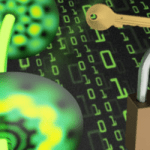Glass Blowing Inspires New class of Quantum Sensors

(Phys.org) High-performance diamond sensors can be made using conventional glass fibers. By embedding micron-scale diamond particles within the cross section of a silicate glass fiber, the team has demonstrated the use of a robust fiber material capable of sensing magnetic fields.
Study lead author and RMIT School of Science’s Dr. Dongbi Bai said it was an exciting achievement that opened the door to many applications in underwater monitoring, mining and beyond. “This allows us to make cheap quantum sensor networks that are able to monitor changes in magnetic field, with many useful applications and the answers to questions we haven’t thought of yet,” she said.
Diamond is one of the front runner technologies for quantum magnetic field sensing, with applications as diverse as brain scanning, navigation and mineral exploration.
But, diamond particles need to be viewed through high-end microscopes that aren’t suited for use over an extended period or in the field.
University of Adelaide Deputy Director of the Institute for Photonics and Advanced Sensing, Heike Ebendorff-Heidepriem, said the team had been working to get around this issue for a decade.
Glass artist Karen Cunningham was making art using nanoparticles to show how light moves through glass and was fascinated by the diamonds that were used by Heike and her colleagues in her research.
“We gave Karen some of our larger diamonds to see how they worked,” RMIT School of Science’s Professor Brant Gibson, explained.
“For us, it was the lightbulb moment and we knew we could make diamond sensors in more conventional glass fibers,” Heike said.
To go from Karen’s art to prototype sensors took another three years of testing and fabrication, explained Dr. Dongbi Bai.



















